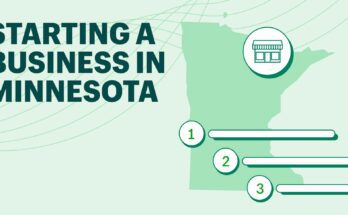In the complex landscape of personal finance, grappling with high-interest debt can feel like navigating a labyrinth. From credit cards to seemingly manageable loans with hefty interest rates, the financial strain is palpable. Today, let’s shed light on the principles of financial wellness and how crafting a budget can serve as a guiding beacon. Alongside, we’ll explore the option of no credit check installment loans in Texas as a recognition that strategic planning is key in managing high-interest debt.
Understanding the Need for Financial Wellness
Before embarking upon our budgeting journey, it is critical that we fully appreciate the detrimental effect high-interest debt can have on our overall financial health. Paying back an endless cycle of payments directed solely toward interest rather than principal can produce feelings of financial entrapment and create feelings of powerlessness over our futures.
This is the juncture where the concept of financial wellness unfurls as an indispensable consideration. It surpasses the routine act of paying bills; it is an orchestration of taking command of your financial narrative. It’s about ensuring that the fruits of your labor are deployed judiciously, strategically working for you rather than against you in the financial theater of life.
The Foundation: Creating a Solid Budget
At the nucleus of financial wellness resides the often underestimated budget – a dynamic tool wielding the transformative power to reshape your financial reality. A budget transcends the mere function of being a ledger of expenses; it intricately encapsulates your income, meticulously outlines your regular expenditures, and designates a dedicated segment for the purposeful repayment of debts.
Constructing a budget demands finesse. It necessitates delicately striking the equilibrium between allocating sufficient funds for life’s necessities and judiciously earmarking money for savings and the reduction of debt. Crafting this financial blueprint is an art form that brings forth clarity to your financial landscape. It provides nuanced insights that not only guide but empower you to make informed and strategic financial decisions with a profound impact on your overall financial health.
In essence, it’s about sculpting a financial framework that aligns with your aspirations and brings about a tangible sense of control over your economic destiny.
Crafting Your Budget: Practical Tips
Now, let’s immerse ourselves in practical tips that can elevate your budget from a mere list of expenses to a dynamic financial instrument. Here are ten actionable strategies to trim unnecessary expenses:
- Dining Out Less Frequently: Opt for home-cooked meals or explore affordable alternatives to dining out.
- Canceling Unused Subscriptions: Identify and eliminate subscriptions that no longer serve your needs.
- Finding More Affordable Alternatives: Seek cost-effective alternatives for everyday expenses without compromising quality.
While these changes may appear incremental, collectively, they liberate funds that can be redirected toward debt repayment, significantly contributing to your journey toward financial wellness.
Prioritizing Debt Repayment
Devoting a segment of your budget to debt repayment is a pivotal step in the pursuit of financial stability. It goes beyond meeting minimum payments; it’s about making strategic choices to efficiently reduce high-interest debt.
Responsible spending plays a central role in this process. By prioritizing needs over wants and making informed choices, you disrupt the cycle of accumulating more debt. It’s about constructing a sustainable financial lifestyle that aligns with your goals, fostering a trajectory toward long-term financial well-being.
Exploring Long-Term Financial Strategies
As we weave the narrative of financial wellness through budgeting, it becomes evident that managing high-interest debt necessitates more than just budgeting – it demands enduring strategies. Consolidating high-interest debt introduces a streamlined approach, consolidating multiple payments into one manageable installment. Financial fitness doesn’t come easy for everyone, but using these strategies could provide the key to financial health for many.
Consider them when embarking on the road toward financial security. Stay disciplined in your budgeting endeavors, and remember that the ultimate goal extends beyond debt-free living. It’s about cultivating a financial landscape where your money is an asset, opening doors to new opportunities and affording you peace of mind.
Takeaway
As you traverse the terrain of financial wellness, recognize that managing high-interest debt requires a comprehensive approach. Craft a budget that serves as your financial compass, guiding you toward responsible spending and debt reduction. Let these smart strategies for consolidating high-interest debt be the cornerstone of your long-term financial strategy, propelling you toward a life where financial decisions empower rather than constrain. As you navigate this journey, embrace the potential for growth and financial resilience that comes with cultivating a healthy relationship with your money.



